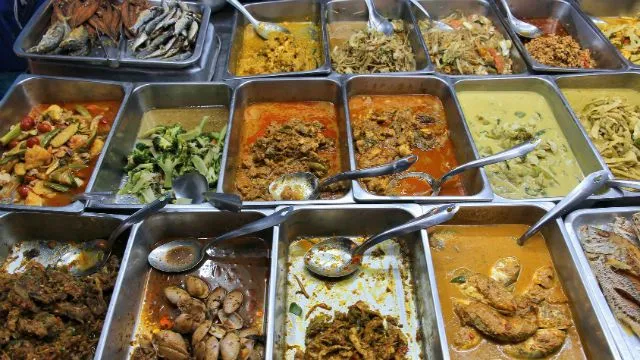
- Share on Facebook490
- Share on Pinterest
- Share on Twitter
The American tradition of the all-you-can-eat buffet is a tempting proposition. For a reasonable price, diners are able to fill their plates time and time again with a wide assortment of foods. However, attractive as this restaurant option may seem, there are several reasons to think again, and proceed with caution.
You don’t know how the food was stored or prepared
Trusting people you do not know in a kitchen you cannot see to prepare food for you is an inherently risky decision. It may not seem like a big deal, but according to the Center for Science in the Public Interest (CSPI), eating at restaurants doubles your risk of foodborne illness compared to eating at home.
Many things can go wrong during food preparation, either unintentionally or through deliberate negligence. Who can forget the news last summer regarding Golden Corral? One of the franchises of this famous all-you-can-eat buffet chain was found to have stored a tray of raw meats outside beside a dumpster. While this incident is outside the norm, food safety oversights are more common than we would like in the restaurant industry.
We recently reported on an investigation by Saru Jayaraman, a professor of public law at Brooklyn College, in which it was reported that 90 percent of restaurant workers do not receive paid sick days. This means that workers often go to work while sick to avoid missing pay, and may be spreading contagious pathogens in the kitchen.
These risks apply to any type of restaurant, not only buffets, so unless you know and trust the owners or their reputation, you cannot really know your food is safe. Buffets contain an added risk, however, since the food is sitting out on the buffet table for an extended period of time. If it is not meticulously rotated by the staff, it can easily sit for too long and increase your risk of foodborne illness.
Items may not always be what they seem
You may walk up to the buffet table intending to get only certain items, for example a veggie dish if you are a vegetarian or vegan, or a rice dish if you are trying to avoid gluten, and be sorely disappointed.
Unless you are careful to verify with the staff on what is in a particular dish, vegetable dishes might be cooked in animal fats, foods you may think would be gluten-free may not be, and any number of items you may not expect may be laden with sugar.
Since food allergies are an issue for many people, restaurants are required to have information on hand about whether common allergens such as wheat, peanuts, tree nuts, fish or eggs have been used in an item.
However, the enforcement of these regulations largely depends on the restaurant owners, managers and employees, and if someone is careless somewhere during the storage, preparation or cooking process, contamination may occur.
Chemical and preservative-laden ingredients are often used
Unless you are visiting a very high-class buffet, the reasonable price you pay for all-you-can-eat often means that inexpensive, often processed, ingredients have been used. If processed and packaged condiments, dressings and sauces appear in your food, you are likely ingesting high fructose corn syrup, monosodium glutamate (MSG) and/or trans fats, among an array of other potential chemical additives.
To cut costs, many buffets and other restaurants cook with cheap soybean or corn oils, which are likely derived from GMO ingredients. These do nothing for your health, and may cause harm.
They encourage over-eating
The very nature of an all-you-can eat buffet drives diners to eat as much as possible to get their money’s worth. With all of the different options available, it is incredibly tempting to go back and refill your plate numerous times to try everything, and get a second helping of your favorite items. Needless to say, this is not good for your waistline, and you will likely find yourself feeling quite sluggish and overstuffed the rest of the day, making it hard to get anything accomplished.
 While eating out every now and then can be a great treat, it is worth it to choose a healthy restaurant that follows strict safety practices, preferably one that serves up organic, local cuisine. This way, you can support your community while enjoying a nutritious meal. If you have a food sensitivity, make sure to talk to the manager about what it is in the dishes you choose – don’t assume anything.
While eating out every now and then can be a great treat, it is worth it to choose a healthy restaurant that follows strict safety practices, preferably one that serves up organic, local cuisine. This way, you can support your community while enjoying a nutritious meal. If you have a food sensitivity, make sure to talk to the manager about what it is in the dishes you choose – don’t assume anything.
A quality restaurant may cost more, and you may be eating out less frequently, but this will make it more of a treat, and you will know that you are not putting yourself in danger.
As far as a buffet, why not enjoy an amazing buffet experience at home? Take a weekend to cook a few of your favorite foods in bulk, possibly recruiting a few friends to help you, and throw a home buffet party for family and friends!
-The Alternative Daily
Sources:
https://www.thealternativedaily.com/golden-coral-exposed-raw-meat-stored-outside-by-dumpster
https://www.thealternativedaily.com/are-you-risking-your-health-to-eat-out
https://www.thealternativedaily.com/6-ways-to-enjoy-eating-out-and-stay-healthy-too
https://www.thealternativedaily.com/save-time-money-cooking-bulk
http://eater.com/archives/2014/04/09/study-restaurant-dining-doubles-chance-of-food-poisoning.php
https://www.cspinet.org/new/201404071.html
- Share on Facebook490
- Share on Pinterest
- Share on Twitter

